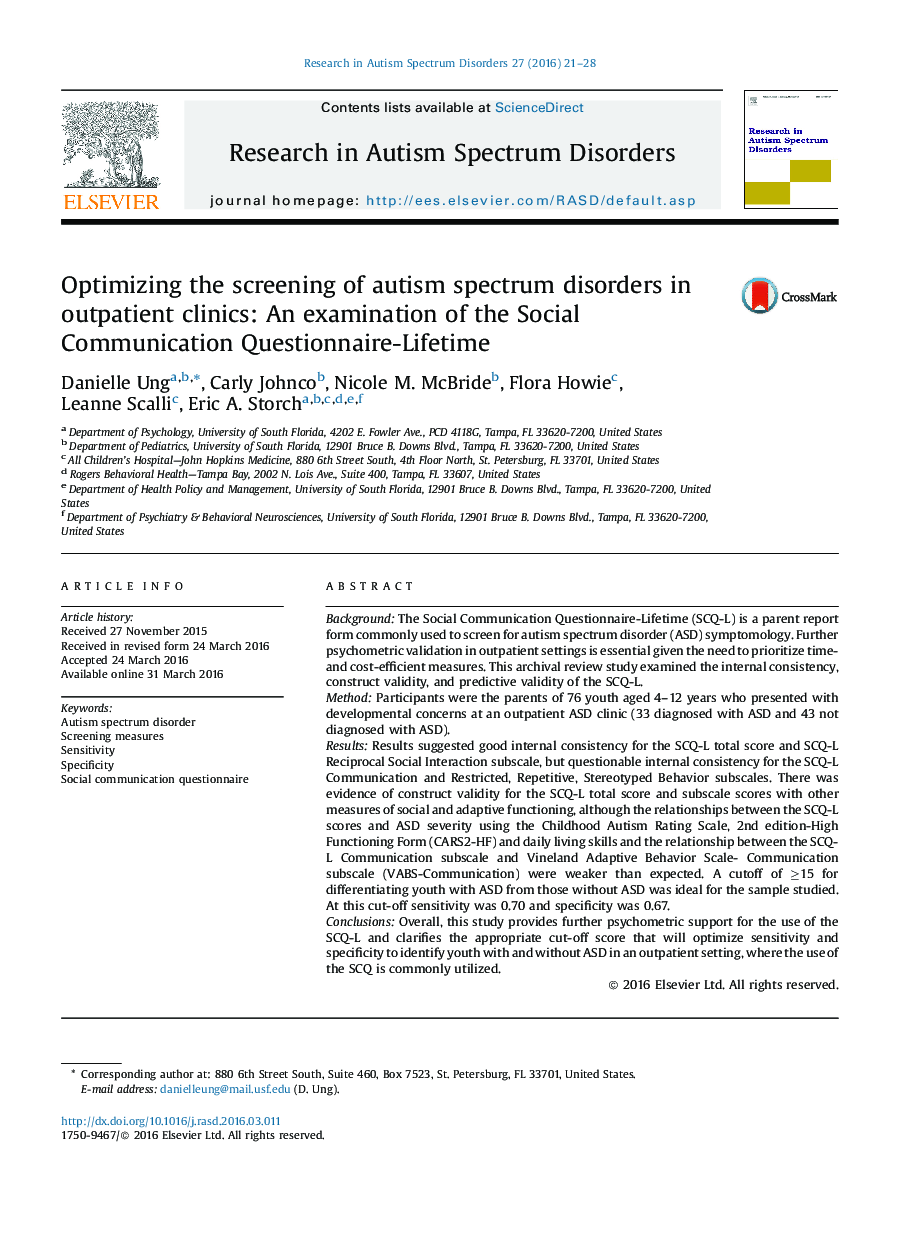| کد مقاله | کد نشریه | سال انتشار | مقاله انگلیسی | نسخه تمام متن |
|---|---|---|---|---|
| 369920 | 621827 | 2016 | 8 صفحه PDF | دانلود رایگان |
• The SCQ-L generally demonstrates good internal consistency.
• Evidence of construct validity for the SCQ-L was found with other measures of social and adaptive functioning.
• The SCQ-L can be an additional valuable screening tool for outpatient clinics evaluating youth with a possible ASD diagnosis and may be prioritized as one of the measures administered during the initial screening phase.
• Selection of screening measures should focus on increasing the sensitivity of the measure.
BackgroundThe Social Communication Questionnaire-Lifetime (SCQ-L) is a parent report form commonly used to screen for autism spectrum disorder (ASD) symptomology. Further psychometric validation in outpatient settings is essential given the need to prioritize time- and cost-efficient measures. This archival review study examined the internal consistency, construct validity, and predictive validity of the SCQ-L.MethodParticipants were the parents of 76 youth aged 4–12 years who presented with developmental concerns at an outpatient ASD clinic (33 diagnosed with ASD and 43 not diagnosed with ASD).ResultsResults suggested good internal consistency for the SCQ-L total score and SCQ-L Reciprocal Social Interaction subscale, but questionable internal consistency for the SCQ-L Communication and Restricted, Repetitive, Stereotyped Behavior subscales. There was evidence of construct validity for the SCQ-L total score and subscale scores with other measures of social and adaptive functioning, although the relationships between the SCQ-L scores and ASD severity using the Childhood Autism Rating Scale, 2nd edition-High Functioning Form (CARS2-HF) and daily living skills and the relationship between the SCQ-L Communication subscale and Vineland Adaptive Behavior Scale- Communication subscale (VABS-Communication) were weaker than expected. A cutoff of ≥15 for differentiating youth with ASD from those without ASD was ideal for the sample studied. At this cut-off sensitivity was 0.70 and specificity was 0.67.ConclusionsOverall, this study provides further psychometric support for the use of the SCQ-L and clarifies the appropriate cut-off score that will optimize sensitivity and specificity to identify youth with and without ASD in an outpatient setting, where the use of the SCQ is commonly utilized.
Journal: Research in Autism Spectrum Disorders - Volume 27, July 2016, Pages 21–28
